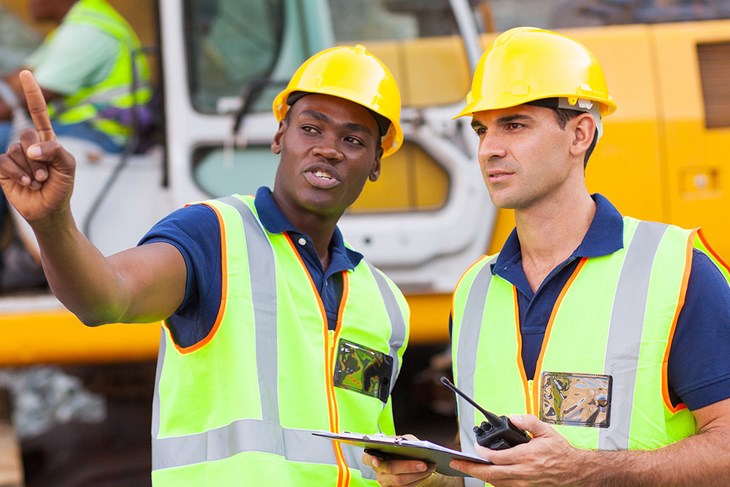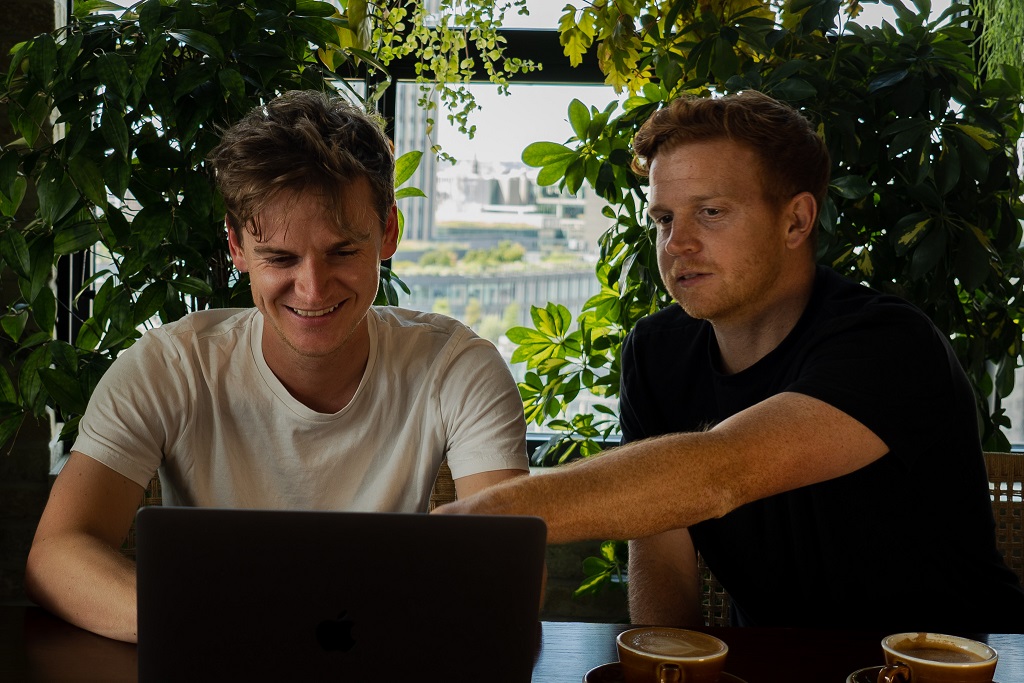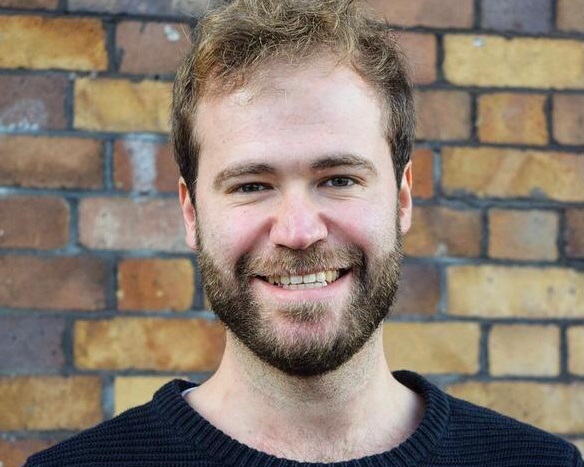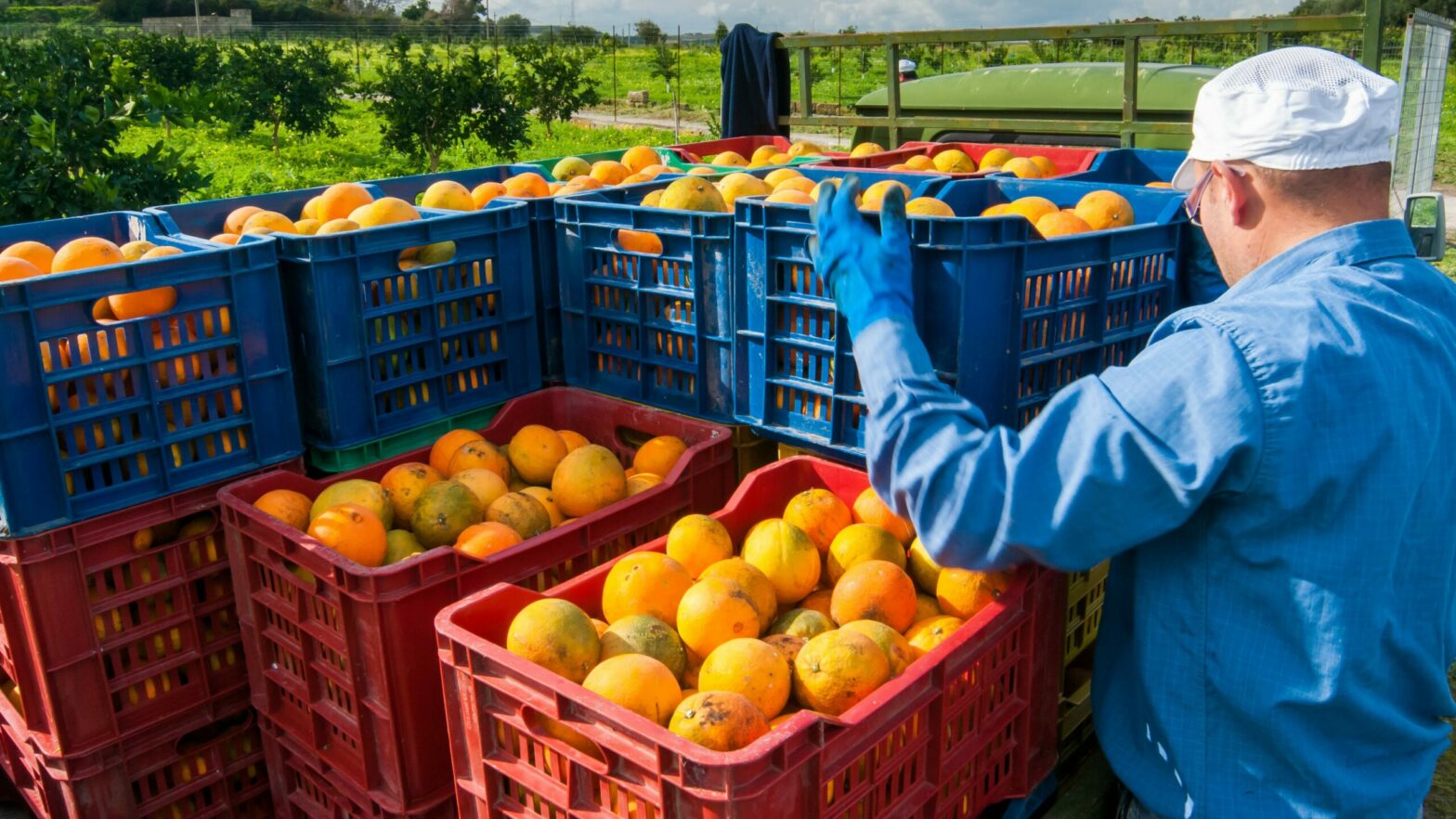When it comes to building and construction, safety is paramount. The slightest misstep or lapse of concentration can cause injury or even death. Just imagine the damage a crane operator can cause if they have a momentary lapse or close their eyes for just one second.
That’s the problem that Mathew Norbury and his team at FC Laboratories have been working on. FC Labs has been developing wearable brain imaging technology which can be worn on its own, with other headgear or implanted in a hardhat. This wearable technology tells the user if their attention is dropping or if they need to take a break.
And this kind of wearable brain imaging technology has lots of other applications as well, from NHS hospital staff being told that it’s time for them to rest through to currency traders in the City being alerted that their split-second judgement is below par.
FC Labs founder and CEO Mathew Norbury talks about why he felt it worthwhile entering the Start-Up Series competition even though his wearable technology was only at an early proof of concept stage, key milestones over the coming year, and why having mentorship is so important.
Tell us about your background as a tech entrepreneur
My original background was in marketing, which I pretty much fell into coming out of university, going on to develop a 20 odd year career and eventually running my own agency.
About five years ago, I decided I wanted to stretch my legs beyond the agency world and I got into various consultancy roles, some pro bono with charities and not-for-profits, others mentoring with start-ups in a number of sectors, including tech. That’s really where my exposure to the tech start-up world began. One of those start-ups was looking at EEG technology (measuring electrical activity in the brain), exposing me to the broad world of wearable brain imaging which FC Labs now specialises in (though using very different technology, which we believe is more appropriate for reliable, practical, cost-effective real-world applications than EEG).
‘Tech founders have become the new rock stars’
What is wearable brain imaging?
Wearable brain imaging is a broad term for a number of different technologies. There are various ways to essentially look at what’s going on inside your head. You’re really looking at a brain activity or activation of certain areas of the brain in different ways. You can measure certain waves and frequencies of electrical activity in the brain and infer things like levels of focus or mental fatigue.
Functional near-infrared spectroscopy, which is what FC Labs works with, looks at blood flow and blood oxygenation and deoxygenation levels. Essentially what we measure is how hard an area of the brain has been asked to work. So, if you are being asked to focus intently on something, for example, then lots of oxygenated blood will be sent to that particular brain area.
There are not many devices measuring brain activity that are genuinely wearable. Those that do exist are bulky, with separate battery packs for example and could be described as portable rather than wearable. What we’re working on is a wear-and-forget solution. A lot of what we’re doing to achieve that is around miniaturising the hardware and minimising the number of sensors, focusing in on just the specific areas of the brain relevant to what we want to measure. Something approaching the quantity and quality of data that an MRI scan would give you, for example, is not really that practical to walk around with. By reducing the number of sensors, miniaturising them, as we are with our first device, Float, by just focusing on mental attention with a single sensor, we can achieve a genuinely ‘wear and forget’ solution.
What’s the first sector that you’re concentrating on with the Float technology?
The first sector we’re addressing is what we’ve defined as the hardhat market, including industries such as construction, engineering, oil & gas, infrastructure, forestry and mining. The hard hat is an indicator of a high degree of risk, obviously, but also allows us to embed our technology in something workers are already putting on their heads. If you’re asking somebody to wear something that they’re not already wearing, that’s a barrier to adoption. You just put your hard hat on as you normally would, make sure our device is switched on, and beyond that, it’s wear and forget. We’re trying to remove all of the traditional barriers to adoption of new technology in sectors such as construction and engineering, which have traditionally been quite resistant to new tech, particularly technology like this. But that’s changing, at quite a pace, particularly because we’ve all become so used wearable technology in our personal lives.
We’re all far more interested than we were five or 10 years ago as to what’s going on in our own bodies. We have devices that you wear on your wrist like a Fitbit or an Apple Watch, which claim to have some insight into what’s going on inside our heads, which to a degree they can, making inferences from temperature, movement, blood flow, pulse, heart rate, those sorts of things. But ultimately, if it’s a function of the brain, like sleep or mental attention, unless you’re measuring what’s going on inside the brain, you’re really just guessing.
What does the Float hardhat tell me if I’m wearing the technology?
Think of it like a canary down a coal mine. We’re aiming to give an early warning of when mental attention levels are either declining or lapsing to a degree which could be of concern. We’re not trying to diagnose what’s causing loss of attention. We’re just trying to identify when mental attention might be declining or lapsing to a point that it may cause an accident or an error.
The data could be tracked long term to identify optimum shift patterns, for example. Everybody has different circadian rhythms. Some people work better in the morning, some people work better in the afternoon. We can help to identify the working patterns which produce the optimum productivity and mental wellness ultimately for workers.
What other areas could you see Float being used in?
We’ve had discussions with healthcare where we were initially thinking of those high-risk roles such as surgeons or anaesthetists where, if they if they make a mistake, then the results could be catastrophic.
Interestingly the healthcare sector was far more interested in how our tech could give people insights into how their mental attention levels are changing over time, driving behavioural change, encouraging them to just be more aware, to self-manage potential fatigue issues by taking rest periods for example, as well as providing management with data to optimise shift patterns and productivity.
Other people have approached us and said this could be really good for something like banking or financial services.
Call centres are another interesting one where it can be a pretty stressful environment. You have to deal with complaints and callers aren’t going to be particularly happy if you’re getting tired and not paying them enough attention. The level of service customer service then drops. Being able to identify when certain people might need to take a break and prompting them to do so is something call centres have expressed an interest in.
At what stage is FC Labs now?
Right now, we’re finalising what we’re calling our research unit. We’ve designed and manufactured our own sensors, which can be connected together in any quantity or configuration and positioned in specific locations on the head using a neoprene cap. This allows us to carry out experiments to identify the best position for collecting the data we need for FLOAT. This work should be completed by the end of August, after which we move into a 12-month project with the University of Stirling to develop our first fully functional prototype. We aim to go out start pilot projects with industry partners by the end of 2022 and then fully launch in early 2023.
What was it that appealed to you about the Start-up Series competition? Why did you decide to enter?
The simplicity of the process was incredibly attractive. I had been aware of the Start-up Series for a number of years. I’ve known people who’ve applied, some who were successful, some not. I’d heard very good things. When it came to looking for our first external funding, the Start-Up Series was right up there for me.
For a start, the process was so simple and approachable compared to many others. I approached taking on external investors for the first time with an amount of trepidationSo much VC investment seems deliberately intimidating. Partly it’s because of the cult of personality that has grown up around some tech founders, who have become the new rock stars in recent years. The performance element of pitching for investment in some of these competitions, the flamboyance of many of those succeeding was somewhat off-putting. My attitude is if you’ve got the idea and the team and the talent, a lack of experience behind a mic on a big stage shouldn’t be something which holds you back.
Apart from investment, the Start-up Series also offers mentorship and a peer network. How important was that for you?
Having that support is fantastic. Paul and Matthew’s backgrounds and experience were really appealing in terms of entering the Start-Up Series. Being a founder and entrepreneur can be quite a lonely existence at times, even when you have a fantastic team as we do at FC Labs. This tech start-up world is still relatively new to me, so having a team like Worth Capital to steer me in the right direction is great. If you’ve got any questions, any concerns, it’s a real comfort to have them close on hand and that really gives me confidence in the future of FC Labs.
What advice would you have for anybody thinking of entering the Start-Up Series?
Just go for it, don’t think twice. The I know that the Worth Capital team – Hayley, Paul and Matthew – will be more than happy to chat if you’re unsure whether you’re ready or not. Just speak to them. If you’ve got an idea, if they like the sound of it, then there’s that support, even at the early stage. And I’d be delighted to chat to anybody who’s thinking about it, as well.
Now that you’re a Start-Up Series winner, what milestones would you like FC Labs to hit over the coming year?
The two key milestones we’re focused on just now are completing the testing and validation of our research unit by the end of August. We then commence the 12 month project to develop our fully functional, looks-like works-like prototype, the delivery of which will be a huge milestone for us.
The Start-Up Series competition
The Series opens for applications every month, with the aim to select one or two winners to receive:
• Up to £250,000 of SEIS/EIS equity funding (subject to due-diligence, terms & conditions).
• A minimum of 2 years invaluable hands-on help from experienced & battle-scarred entrepreneurs
• Media coverage on smallbusiness.co.uk & other channels to promote your business & follow your journey.
We are on the hunt for B2B or B2C business across all sectors. As long as your business is eligible for SEIS or EIS HMRC advance assurance, then we’ll consider your application.
We’ll be impressed by innovative products or services, in high growth or underserved markets, with the potential to build a loved brand. If you can demonstrate these, you’re in with a fighting chance.
Because the investment will come from an EIS & SEIS FCA regulated fund, businesses who are considering entering need to satisfy the following criteria set by HMRC:
• You must be a UK resident and run a UK-based business
• You must be over 18 years old at the time of entry
• Certain financial services and property businesses are unlikely to qualify.
Find out how to enter The Start-Up Series here
Further reading
What winning the Start-Up Series meant for me – Carrie Davies, ONE Essentials




